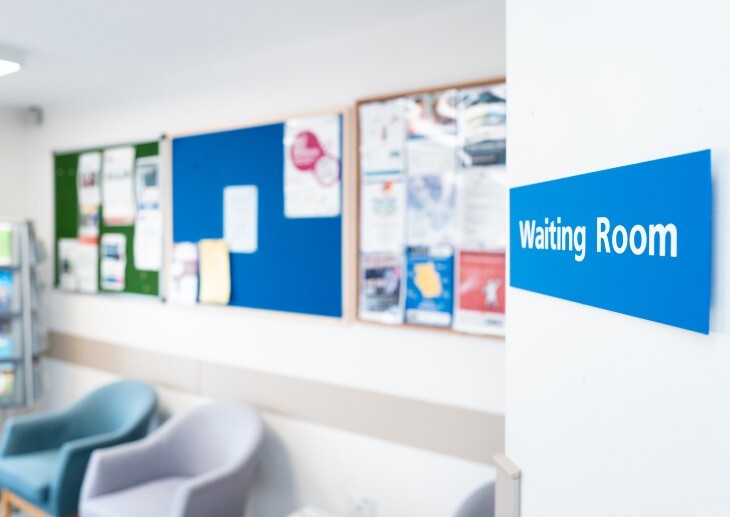NHS Staffordshire and Lancashire commissioning support unit explain how they engage with patients using their innovative insight database
NHS Staffordshire and Lancashire commissioning support unit (CSU) is the third largest in the country and covers Staffordshire, Lancashire, Telford and Wrekin, Shropshire and Herefordshire with a population of 3.7 million.
NHS Staffordshire and Lancashire commissioning support unit explain how they engage with patients using their innovative insight database
NHS Staffordshire and Lancashire commissioning support unit (CSU) is the third largest in the country and covers Staffordshire, Lancashire, Telford and Wrekin, Shropshire and Herefordshire with a population of 3.7 million.
We have more than 750 staff and provide a host of high quality commissioning support services to 17 clinical commissioning group (CCG) customers as well as the Staffordshire and Shropshire NHS England area team.
The NHS has changed, with its new organisations and ways of working, but many things remain consistent – like the need for high quality communications and involvement services. These services, if delivered in a systematic way, can provide patients and the public with the opportunity to have meaningful involvement so that they are integral to the decision-making process.
The communications and engagement team at NHS Staffordshire and Lancashire CSU have worked with our emergent CCGs, and we have developed a systematic approach to public and patient involvement that has its roots in systemic review of cause and effect.
This approach is achieved by using an insight database which collates, aggregates, analyses and reports quality data in real time to CCG staff, based on their commissioning portfolio. This is supported by a model of involvement that uses multiple tactics to empower patients and the public to have a voice from GP practice level to board level.
Our insight database is used to record all types of patient experience feedback including feedback from focus groups, consultations, surveys, social media, patient opinion, NHS choices, media, MP letters, patient advice and liaison services (PALS) and complaints. The database categorises the feedback under five domains of patient experience and allocates it to the provider of the service. This allows a picture of provider performance via real time patient experience dashboards making the information available to CCGs, contract management and quality staff within the CSU as well as colleagues at the NHS England area team (AT).
All data is reported by CCGs, however through data sharing agreement all nine CCGs in Staffordshire are able to share data at a practice or provider level. This data can be integrated at organisation, department, service, specialty, ward or person level.
The insight model is supported by a model of involvement with a membership scheme, where the public can register their interest in health and receive a monthly email bulletin that invites people to give feedback and to attend focus groups, workshops and events.
The patient participation groups at practice level are able to use the membership scheme as virtual groups by segmenting by GP practice, and the groups are asked to recruit to the membership scheme to extend the reach.
The locality patient groups are made of community groups, members of the patient participation group (PPG), practice staff and GPs, and they come together to look at joint strategic needs assessments on a local basis to help develop services.
The membership, locality groups and PPGs are also part of the strategic patient congress where they are joined by local HealthWatch and representatives from the community and voluntary sector. The congress works in partnership with the CCGs to provide support, advice, challenge and scrutiny of public and patient involvement in commissioning. The congress is chaired by the patient and public involvement (PPI) lay member and reports directly to the governing body.
Model of involvement
The Insight model has been transformed into a quality system by entering clinical feedback from GPs and by reporting incidents in primary care settings. All data comes together and is reported in real time to identify themes and trends across the quality spectrum.
This holistic approach has been pioneered by Stoke-on-Trent CCG and has been rolled out to all 54 GP practices. Work is now underway to rollout to the GP practices in Telford and Wrekin and Shropshire with the other six CCGs to follow. This will see 260 practices using the system to improve services for patients and the public.
Locally we are working with voluntary sector groups and the NHS England Staffordshire and Shropshire AT to provide access to enter and review data.
Our approach to insight and involvement receives lots of interest from CCGs, CSUs, local Healthwatch organisations, acute, community and mental health providers as well as local authorities.
The potential to use data across this wide range of organisations would go a long way towards understanding the voice of local patients and the wider public across the transformation and integration agenda. We are also working with the local health and wellbeing boards (HWBs) to share intelligence and patient experience of services.
The symbiotic approach to insight and involvement has seen many improvements for patients from small local improvements in GP practices to large-scale reviews of service such as community nursing, maternity services and urgent care services.
This multi-award-winning insight database is now being rolled out to the eight CCGs in Lancashire with an implementation plan for GP practices.
Key facts
Who uses Insight?
– Nine CCGs in Staffordshire.
– CSU staff from the quality, contract management, communications and engagement and patient services team.
– 54 GP practices in Stoke-on-Trent.
– Patient congress at each of the CCGs.
What do they use it for?
– Logging patient experience feedback from multiple sources.
– Recording clinical feedback from GPs about any clinical effectiveness concerns.
– Entering incidents in primary care settings.
– Planning review of commissioning intentions.
– Reviewing services highlighted as outliers from monitoring themes and trends.
– Assuring the patient congress of actions based on direct patient feedback.
– Logging and workflow management of complaints, PALS, incidents and feedback.
– Reporting on ‘you said, we did.’
– Access to real-time reporting via dashboards.
– Setting up flags for services of concern.
– Refreshing the communications and engagement strategy based on what patients are saying.
– Managing contracts and improving the quality of services.
– GP practice assurance visits.
What are the benefits?
– Real-time monitoring via web-based system.
– System allows multiple levels of access so staff can see the data relevant to their role.
– Data sharing across CCGs and the NHS England LAT gives a true picture of patient experience, clinical effectiveness and safety across primary, secondary and tertiary care providers.
– Workflow management, single record, full audit trail and ability to allocate actions through the system.
– Standard operating procedures for data entry, reduction in time spent per case and high return on investment ratio.
– Multiple organisation approach with opportunities to work across health and social care as well as acute, community and mental health services.
Next steps:
– Roll out to 64 practices in Telford and Wrekin and Shropshire.
– Roll out to remaining GP practices across Staffordshire.
– Roll out to GP practices in Herefordshire.
– Roll out to eight CCGs in Lancashire.
– Roll out to GP practices in Lancashire.
– Roll out to voluntary sector and condition support groups across Stoke on Trent, Age UK, North Staffs Users Group.





